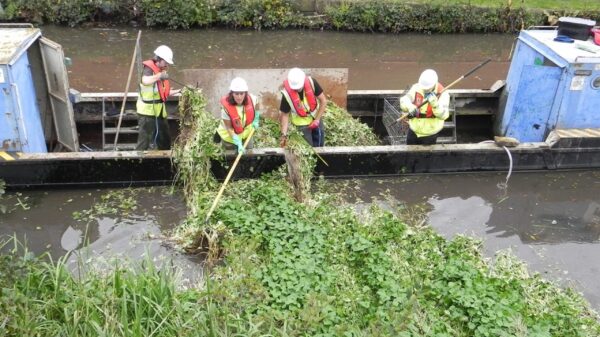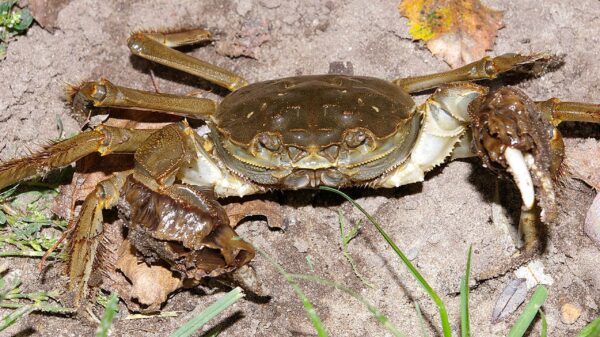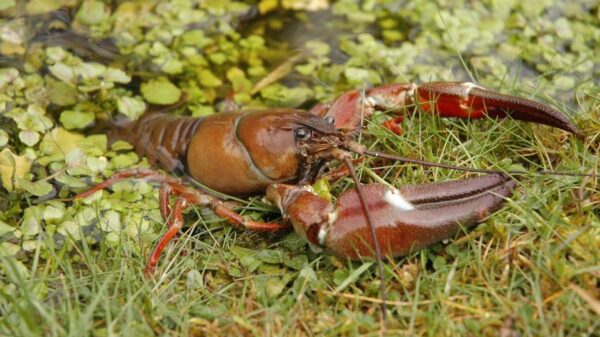Introduction
In the 1970s, Signal Crayfish (Pacifastacus leniusculus) was introduced from North America to UK waters for export into the lucrative Scandinavian market. The crayfish plague had ravaged native crayfish populations across Europe and it was seen as an attractive commercial species. Unfortunately this species is a carrier of crayfish plague and is thought to be responsible for passing the deadly disease to the native White-clawed crayfish (Austropotamobius pallipes) in the UK.
Signal crayfish soon escaped from commercial fisheries and began to outcompete the native white-clawed crayfish for habitat and food. They have decimated the native crayfish populations where present. Signal crayfish cause further problems by burrowing into river and canal banks causing erosion, bank collapse and sediment pollution. The signal crayfish is a voracious predator, feeding on a variety of fish, frogs and invertebrates, as well as plants, and even eating individuals of its own species.
What do Signal Crayfish look like?
Signal crayfish is lobster-like in appearance and reaches a maximum size of 16-18cm.
Its claws have red undersides with a small turquoise/white blotch on the upper surface at the claw hinge. The upper surface of this species is usually brown to greenish-brown, while the lower surface is often a contrasting bright orange or red. The signal crayfish has a distinctly smooth ridge running along the middle of the rostrum (the foremost projection of the carapace).
In comparison, the native white-clawed crayfish is much smaller (under 12cm), with a brown to olive pitted body. The underside of the claws are usually a dirty-white colour – never red.
The white-clawed crayfish was once a widespread and common species in English and Welsh rivers, but has suffered a decline of 50 – 80% across its European range in the last ten years and is classified as ‘endangered’ on the IUCN red list of threatened species and is at risk of global extinction.








